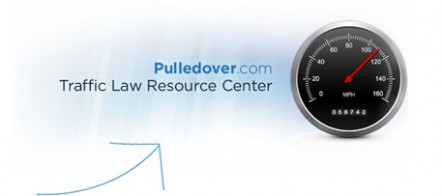November 3, 2017
Ever wonder where cities get their authority to implement traffic laws? In Missouri, the state legislature has passed multiple statutes related to traffic. One statute, 304.010, sets out maximum speed limits and penalties, and grants authority to cities to set those limits.
One provision, states that cities, towns and villages may regulate the speed of vehicles on state roads and highways within their cities’, towns’ or villages’ corporate limits. To do so, they must pass an ordinance with the approval of the state highways and transportation commission.
The statute says that if there is any reduction of speed in these cities, towns or villages, they must be designed to expedite the flow of traffic on state roads or highways to be consistent with public safety. That basically means the commission can declare any cities’ ordinance void if it finds that such ordinance is not designed to expedite traffic flow, and it was primarily designed to produce revenue for the city that enacted the ordinance.
The bottom line, thankfully, is that cities do have statewide oversight when it comes to regulating traffic within their boundaries. This helps us find that balance between public safety versus excessive regulations and punishment.
The statute is below if you want to learn more:
304.010. Definitions — maximum speed limits — cities, towns, villages, certain counties, may set speed limit, how set — slower speeds set, when — violations, penalty. — 1. As used in this section, the following terms mean:
(1) “Expressway”, a divided highway of at least ten miles in length with four or more lanes which is not part of the federal interstate system of highways which has crossovers or accesses from streets, roads or other highways at the same grade level as such divided highway;
(2) “Freeway”, a limited access divided highway of at least ten miles in length with four or more lanes which is not part of the federal interstate system of highways which does not have any crossovers or accesses from streets, roads or other highways at the same grade level as such divided highway within such ten miles of divided highway;
(3) “Rural interstate”, that part of the federal interstate highway system that is not located in an urban area;
(4) “Urbanized area”, an area of fifty thousand population at a density at or greater than one thousand persons per square mile.
2. Except as otherwise provided in this section, the uniform maximum speed limits are and no vehicle shall be operated in excess of the speed limits established pursuant to this section:
(1) Upon the rural interstates and freeways of this state, seventy miles per hour;
(2) Upon the rural expressways of this state, sixty-five miles per hour;
(3) Upon the interstate highways, freeways or expressways within the urbanized areas of this state, sixty miles per hour;
(4) All other roads and highways in this state not located in an urbanized area and not provided for in subdivisions (1) to (3) of this subsection, sixty miles per hour;
(5) All other roads provided for in subdivision (4) of this subsection shall not include any state two-lane road which is identified by letter. Such lettered roads shall not exceed fifty-five miles per hour unless set at a higher speed as established by the department of transportation, except that no speed limit shall be set higher than sixty miles per hour;
(6) For the purposes of enforcing the speed limit laws of this state, it is a rebuttable presumption that the posted speed limit is the legal speed limit.
3. On any state road or highway where the speed limit is not set pursuant to a local ordinance, the highways and transportation commission may set a speed limit higher or lower than the uniform maximum speed limit provided in subsection 2 of this section, if a higher or lower speed limit is recommended by the department of transportation. The department of public safety, where it believes for safety reasons, or to expedite the flow of traffic a higher or lower speed limit is warranted, may request the department of transportation to raise or lower such speed limit, except that no speed limit shall be set higher than seventy miles per hour.
4. Notwithstanding the provisions of section 304.120 or any other provision of law to the contrary, cities, towns and villages may regulate the speed of vehicles on state roads and highways within such cities’, towns’ or villages’ corporate limits by ordinance with the approval of the state highways and transportation commission. Any reduction of speed in cities, towns or villages shall be designed to expedite the flow of traffic on such state roads and highways to the extent consistent with public safety. The commission may declare any ordinance void if it finds that such ordinance is:
(1) Not primarily designed to expedite traffic flow; and
(2) Primarily designed to produce revenue for the city, town or village which enacted such ordinance.
If an ordinance is declared void, the city, town or village shall have any future proposed ordinance approved by the highways and transportation commission before such ordinance may take effect.
5. The county commission of any county of the second, third or fourth classification may set the speed limit or the weight limit or both the speed limit and the weight limit on roads or bridges on any county, township or road district road in the county and, with the approval of the state highways and transportation commission, on any state road or highway not within the limits of any incorporated city, town or village, lower than the uniform maximum speed limit as provided in subsection 2 of this section where the condition of the road or the nature of the area requires a lower speed. The maximum speed limit set by the county commission of any county of the second, third, or fourth classification for any road under the commission’s jurisdiction shall not exceed fifty-five miles per hour if such road is properly marked by signs indicating such speed limit. If the county commission does not mark the roads with signs indicating the speed limit, the speed limit shall be fifty miles per hour. The commission shall send copies of any order establishing a speed limit or weight limit on roads and bridges on a county, township or road district road in the county to the chief engineer of the state department of transportation, the superintendent of the state highway patrol and to any township or road district maintaining roads in the county. After the roads have been properly marked by signs indicating the speed limits and weight limits set by the county commission, the speed limits and weight limits shall be of the same effect as the speed limits provided for in subsection 1 of this section and shall be enforced by the state highway patrol and the county sheriff as if such speed limits and weight limits were established by state law.
6. The county commission of any county of the second, third, or fourth classification may by ordinance set a countywide speed limit on roads within unincorporated areas of any county, township, or road district in the county and may establish reasonable speed regulations for motor vehicles within the limit of such county. No person who is not a resident of such county and who has not been within the limits thereof for a continuous period of more than forty-eight hours shall be convicted of a violation of such ordinances, unless it is shown by competent evidence that there was posted at the place where the boundary of such county road enters the county a sign displaying in black letters not less than four inches high and one inch wide on a white background the speed fixed by such county so that such signs may be clearly seen by operators and drivers from their vehicles upon entering such county. The commission shall send copies of any order establishing a countywide speed limit on a county, township, or road district road in the county to the chief engineer of the Missouri department of transportation, the superintendent of the state highway patrol, and to any township or road district maintaining roads in the county. After the boundaries of the county roads entering the county have been properly marked by signs indicating the speed limits set by the county commission, the speed limits shall be of the same effect as the speed limits provided for in subsection 1 of this section and shall be enforced by the state highway patrol and the county sheriff as if such speed limits were established by state law.
7. All road signs indicating speed limits or weight limits shall be uniform in size, shape, lettering and coloring and shall conform to standards established by the department of transportation.
8. The provisions of this section shall not be construed to alter any speed limit set below fifty-five miles per hour by any ordinance of any county, city, town or village of the state adopted before March 13, 1996.
9. The speed limits established pursuant to this section shall not apply to the operation of any emergency vehicle as defined in section 304.022.
10. A violation of the provisions of this section shall not be construed to relieve the parties in any civil action on any claim or counterclaim from the burden of proving negligence or contributory negligence as the proximate cause of any accident or as the defense to a negligence action.
11. Any person violating the provisions of this section is guilty of a class C misdemeanor, unless such person was exceeding the posted speed limit by twenty miles per hour or more then it is a class B misdemeanor.

